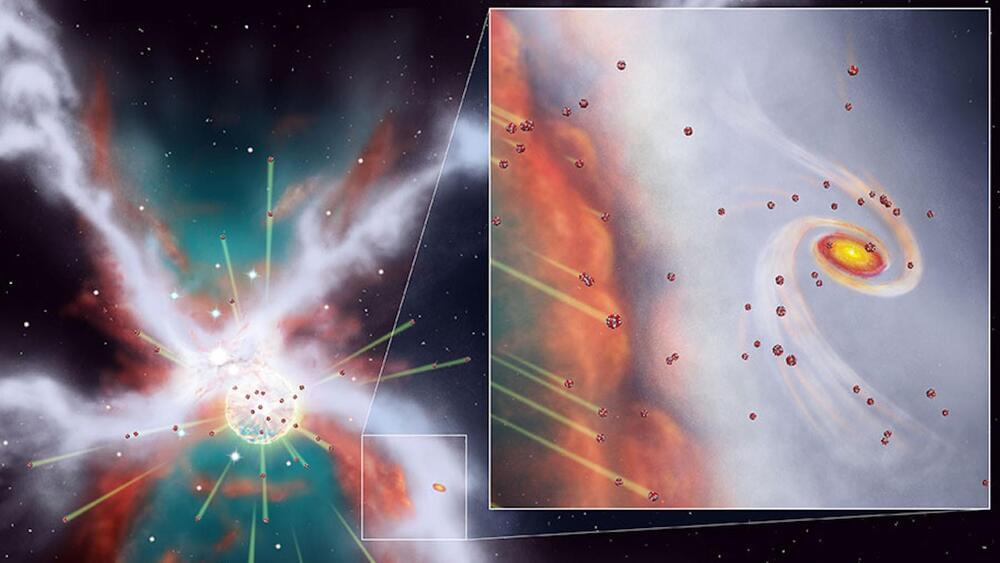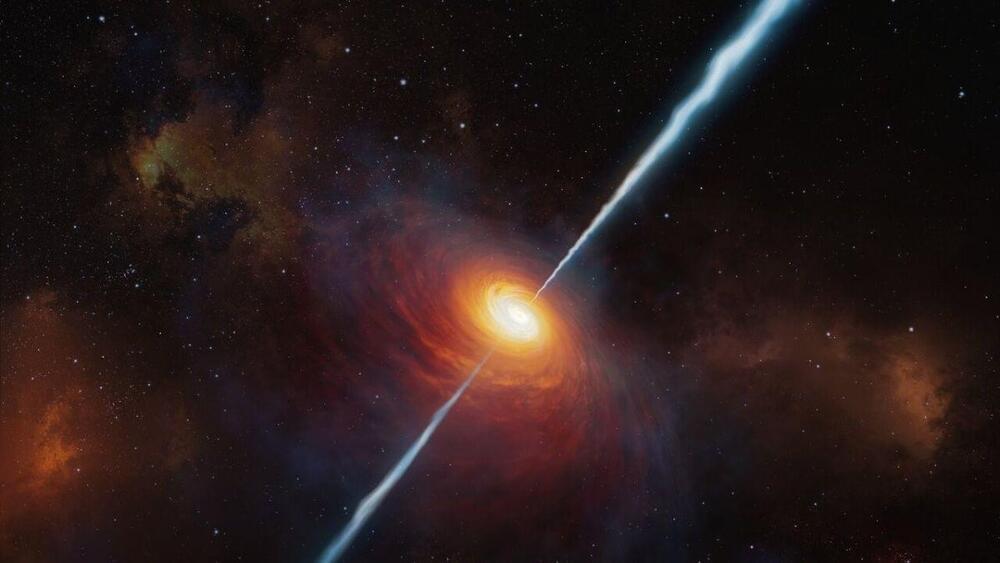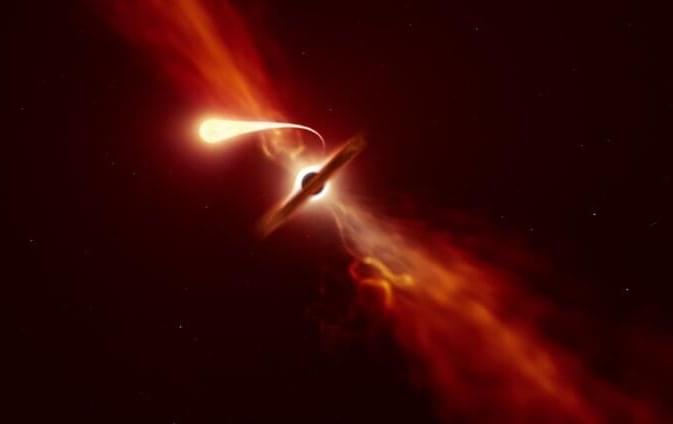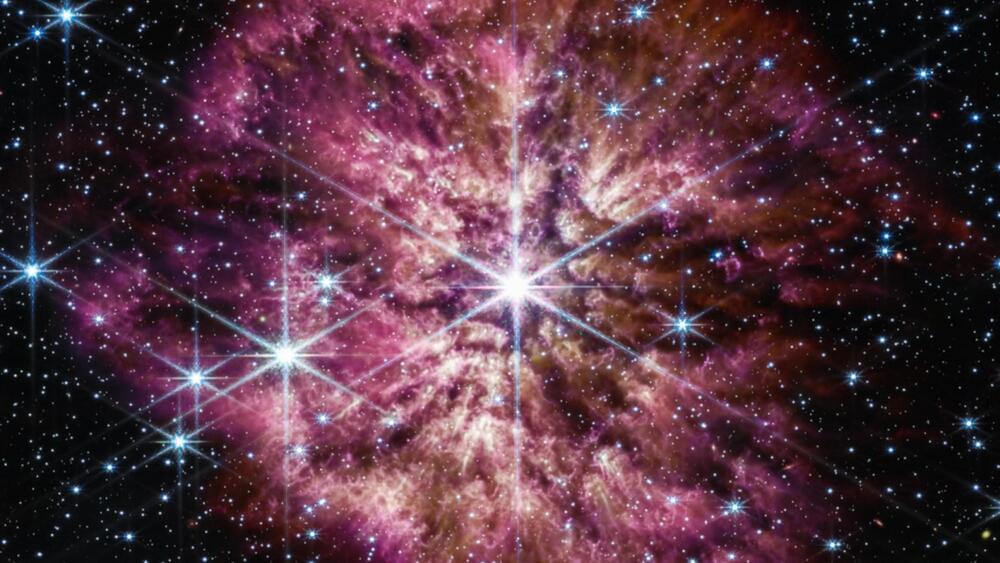A black hole 10 billion light-years away suddenly ‘switched on’, becoming one of the brightest transient objects ever detected.


An object lurking in the foggy dawn of the Universe has given astronomers a big surprise.
Observations collected through the James Webb Space Telescope have revealed an active supermassive black hole 9 million times the mass of the Sun – one that is actively growing as it slurps up matter from the space around it.
At around just 570 million years after the Big Bang, this is the earliest growing supermassive black hole detected yet, although scientists are hoping it won’t remain the record-holder for long.

A new paper suggests the early solar system was shielded from the destructive force of a dying star.
Our sun may have been shielded from a massive supernova explosion by a shield of molecular gas during the early evolution of our solar system, a press statement reveals.
The researchers, led by National Astronomical Observatory of Japan astrophysicist Doris Arzoumanian, believe their findings could shed light on the early formation of the solar system at the same time as helping us better understand how distant star systems evolve over time.

Lewis and Brendon Brewer of the University of Auckland are co-authors on a new paper describing the long-sought after confirmation of time dilation effects in the variability of quasars. A quasar is powered by an accreting supermassive black hole at the heart of an extremely active galaxy. Because the accretion disk around the black hole is relatively small, fluctuations in the light emitted by the quasar can take place in just days. This makes them easier to track.
However, in the time since the light, and its fluctuations, was emitted from the 12 billion-year-old quasars, the universe has expanded greatly. This means that we are seeing the quasars as they existed over 12 billion years ago.
“We expected quasars to also exhibit this behavior, but previous searches had failed to find it,” said Lewis.

Researchers from the University of Tokyo pool knowledge of robotics and tissue culturing to create a controllable robotic finger covered with living skin tissue. The robotic digit has living cells and supporting organic material grown on top of it for ideal shaping and strength. As the skin is soft and can even heal itself, the finger could be useful in applications that require a gentle touch but also robustness. The team aims to add other kinds of cells into future iterations, giving devices the ability to sense as we do.
Albert Einstein proved decades ago that time and space are inseparable. However, because of the expansion of the Universe, events that occurred after the Big Bang now appear to have slowed down. As it turned out, time flowed many times slower at the dawn of the Universe than it does today.
Here’s What We Know
Scientists at the University of Sydney have come to this conclusion. Their study took two decades. During this time period, they observed 190 active supermassive black holes at the centres of galaxies. They are emitted by intense radiation and are called quasars.

A team of astronomers led by researchers from the University of Birmingham, University College London and Queen’s University Belfast have discovered one of the most dramatic ‘switches on’ of a black hole ever seen. They will present their findings on Tuesday 4 July at the 2023 National Astronomy Meeting in Cardiff. The work will also be published in Monthly Notices of the Royal Astronomical Society.
J221951-484240, known as J221951, is one of the most luminous transients—astrophysical objects that change their brightness over a short period of time—ever recorded. It was discovered by Dr. Samantha Oates, an astronomer at the University of Birmingham, and her team, in September 2019 while searching for the electromagnetic light from a gravitational wave event. The team were using the Ultra-Violet and Optical Telescope on board the Neil Gehrels Swift Observatory to look for a kilonova, the sign of a neutron star merging with another neutron star or a black hole. A kilonova typically appears blue, then fades and turns more red in color over a timescale of days. What they found instead something even more unusual: J221951. The transient appeared blue, but didn’t change color or fade rapidly as a kilonova would.
Multiple telescopes were used to follow-up J221951 and determine its nature, including NASA’s Swift/UVOT and Hubble Space Telescope, the South African Large Telescope, and ESO facilities such as the Very Large Telescope and the GROND instrument on the MPG/ESO 2.2-meter telescope at the La Silla Observatory.
Scientists have for the first time observed the early universe running in extreme slow motion, unlocking one of the mysteries of Einstein’s expanding universe. The research is published in Nature Astronomy.
Einstein’s general theory of relativity means that we should observe the distant—and hence ancient— universe running much slower than the present day. However, peering back that far in time has proven elusive. Scientists have now cracked that mystery by using quasars as “clocks.”
“Looking back to a time when the universe was just over a billion years old, we see time appearing to flow five times slower,” said lead author of the study, Professor Geraint Lewis from the School of Physics and Sydney Institute for Astronomy at the University of Sydney.

Wolf-Rayet (WR) stars are not only hot, bright, and massive. They are also in an advanced stage of evolution, losing mass at an incredible rate.
While surveying the neighboring Andromeda galaxy, astronomers discovered a new batch of Wolf-Rayet stars.
Some huge stars in galaxies may develop into Wolf-Rayet stars before going supernova. That’s why, Wolf-Rayet stars are intriguing candidates for studying the universe’s evolution.
In three months, the tool will begin a six year exploration of dark energy and dark matter.
Dark energy and dark matter discovery tool Euclid successfully launched on a SpaceX Falcon 9 rocket from Cape Canaveral in Florida, USA, at 11:11 local time / 16:11 BST / 17:11 CEST on Saturday 1 July 2023. The first stage proceeded to return to Earth to be recaptured and reused at later flights.
Euclid had a long journey. “Between 23 and 28 June, Euclid was mounted atop the Falcon 9 adaptor, encapsulated in the rocket fairing, and transported to the Cape Canaveral Space Launch Complex 40 (SLC-40),” wrote ESA in a statement.
Euclid’s destination is the Sun-Earth Lagrange point L2, an equilibrium point… More.
ESA/YouTube.